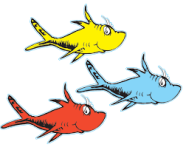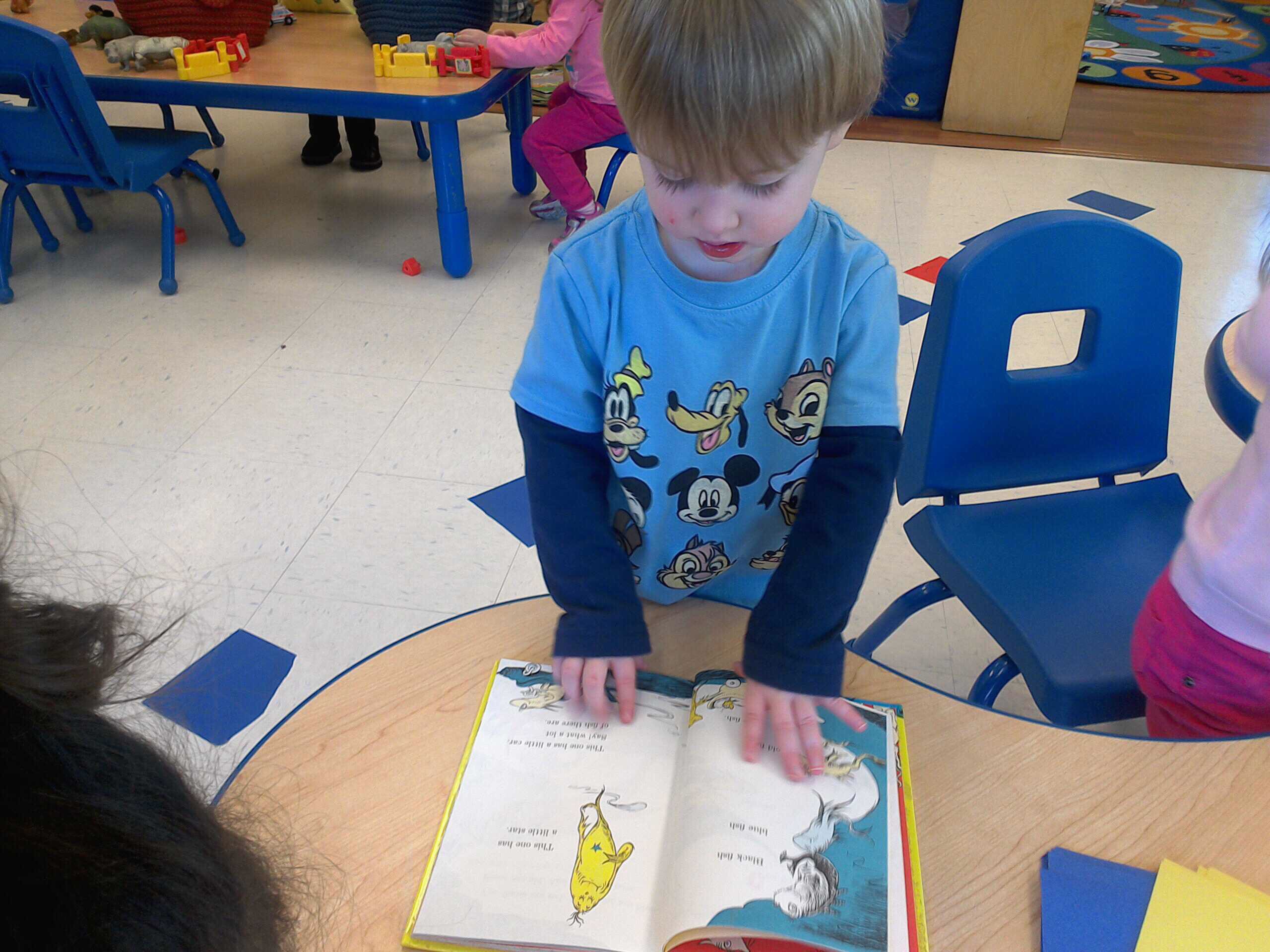Steven Matz
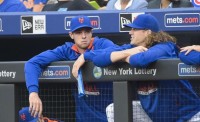
There’s no blaming the Mets for Jacob deGrom‘s right lat injury. Injuries happen. However, we yet again have to question how the Mets handle injuries and their roster.
At the outset, the Mets are skipping deGrom’s start on Wednesday. He also isn’t going to throw in the bullpen for the time being. This is a very reasonable course of action. There’s no need rushing deGrom back in April possibly causing him further injury. With that said, there’s no reason why deGrom hasn’t been sent for an MRI.
It was just last year the Mets dealt with Steven Matz and his lat. The Mets thought he was fine. They didn’t send him for an MRI, and they let him make his next start. As we discovered, he shouldn’t have made that start. He wouldn’t throw another pitch for the Mets for another two months. The Mets treatment of Matz follows a pattern. It’s at this point, we’re obligated to review Jared Diamond’s breakdown in the Wall Street Journal of how the Mets downplay injuries:

For a second, let’s be optimistic about deGrom’s injury. Let’s assume it really is tightness and not worse. Let’s assume an MRI really isn’t needed. Why not put him on the DL anyway?
With deGrom missing a start, Logan Verrett will take his spot in the rotation. This is the same Verrett who pitched yesterday. This means he will be starting on two days rest on Wednesday. He also isn’t fully stretched out. He only threw 15.2 innings in eight Spring Training games. Long story short, the Mets bullpen is going to be taxed.
The bullpen is also going to be one man short as Verrett rests from his start.
Instead of having a short bullpen, the Mets should just put deGrom on the DL. He’s already missing one start. If deGrom were to go on the DL, he would be eligible to make his next start on Sunday, April 24th instead of Tuesday, April 19th against the Phillies. Despite the Mets losing two out of three to the Phillies this past weekend, the Mets should still be able to win with Verrett on the mound.
In turn, deGrom can use that time to rest, not rush back, and not exacerbate his lat injury. He can be home when his wife gives birth. He can spend some quality time home with his newborn son before going back on the road. deGrom can get his mind and his body in the right place before pitching again.
The Mets need to put deGrom on the DL right now.
Editor’s Note: this was first published on metsmerizedonline.com

The Mets have a $140 million payroll. The strength of the team is its young, cost-controlled pitching. The pre-arbitration pitchers make little money by baseball standards. However, their $500,000+ salary should allow them to live comfortably.
Families make a lot less than that, and they can put a roof over their families heads and put food on the table. One of the crazy things a family is able to afford, even with relatively modest means, is a mattress for everyone. When they go away to places like Florida, they can stay at places that have decent mattresses. So with that said, why can’t the Mets and their players?
Last year, Steven Matz almost missed the postseason because he injured his back sleeping on a Barcalounger. Yesterday, Jacob deGrom missed his Spring Training start because he tweaked his back sleeping on a mattress that was too soft. He was able to throw a bullpen. He then counseled with Matt Harvey who, like Baby Bear, had a mattress recommendation that is just right.
I know, I know. We should calm down. Matz was able to pitch in the postseason, and deGrom was able to pitch a pain free bullpen. However, I get nervous because it’s the dumbest things that interfere with a great or potentially great season.
The 1987 Mets never got traction with their pitchers missing time. Most notably was Dwight Gooden and his cocaine suspension. Aside from Gooden, I think every Met pitcher had an injury including the guy who threw batting practice.
In 1988, the Mets returned to form, but there was a strange injury that hurt their chances at another World Series title. On the day the Mets clinched the NL East, Bob Ojeda, who was amazing in 1986, nearly severed the middle finger on his pitching hand while trimming the bushes in his front yard. The Mets, who dominated the Dodgers in the regular season, lost the NLCS in seven games.
In 2006, Duaner Sanchez suffered a season ending shoulder injury during a late night cab ride to get a late night bite. This caused a number of moves to try to replace his spot in the bullpen. In the seventh inning of Game Two of the NLCS, Guillermo Mota shook off Paul Lo Duca and threw a change up that Scot Spiezio turned into a game tying triple. In Game Seven, Aaron Heilman allowed Yadier Molina to hit the series winning homerun. It’s possible Sanchez would’ve closed the door in either situation. Instead, he was unavailable.
The overriding point is that it’s not just the Tommy John surgeries that kill your chances. It’s also the yard work and can rides. It’s the unforeseen problems that arise. Maybe the Mets win in 1988 if Ojeda hires a gardener. Maybe the Mets win in 2006 if Sanchez orders room service. I don’t want to say maybe the Mets win in 2016 if their pitchers had better mattresses.
If in the equipment manager, I’m ordering a mattresses that Harvey recommended for every player. The 2016 season cannot be derailed by a bad mattress.

In honor of Pi Day, let’s look at all the things to look forward to during the 2016 season:
3.1 – Mike Piazza
This summer Mike Piazza is going into the Hall of Fame as a Met. He’s the first Mets position player to do so. The following weekend, he will also be the first Mets position player to have his number retired. He will forever be remembered for all of his homeruns, especially the homerun after 9/11. More importantly, he will forever be a Met.
41 – Tom Seaver
Seaver is the greatest Met to ever wear the uniform, and perhaps, the greatest right handed pitcher of all time. He was rightly dubbed “The Franchise.” With him, he began the aura of the Mets always having good pitching. This year his mantle will be picked up again by a dominant young staff reminiscent of the pitching staffs Seaver was a part of back in his day.
59 – Antonio Bastardo
Bastardo is one of a few key free agents the Mets added this offseason. Last year, the Mets had bullpen problems forcing them to overuse Jeurys Familia and trade a lot of good young pitching away to build a bullpen around the trade deadline. This year, Bastardo is a key arm in what appears to be a bullpen worthy of holding down the leads handed to them from their dominant starting pitchers.
26 – Kevin Plawecki
Plawecki had a rough 2015 whether it was because of him being rushed to the majors too soon or him needing sinus surgery. Given Travis d’Arnaud‘s injury history, it is very possible Plawecki is going to get another shot at being the Mets starting catcher next year. At some point, he will be called upon to not only continue his tremendous work as a receiver, but also being a more potent bat to the Mets lineup.
5 – David Wright
The biggest question mark in the 2015 season is how much David Wright can play and how effective he can be over the course of a 162 game season. Wright is the team leader and Captain, and they’re going to need him. At the end of 2015, he showed he can still hit and be an important part of the Mets. They’re going to need him at some point next year.
35 – Logan Verrett
After losing Verrett in the Rule 5 draft last year, he’s back with the Mets organization. Last year, he was an important swing man. He was first a bullpen arm and later a spot starter who gave a young pitching staff some rest before the postseason. In 2016, Verrett is likely to serve a similar role regardless of where he starts the year. At some point, the Mets will need him, even if it’s just to get the starters some rest before another postseason run.
89 – The Closing of a Window
After the Mets lost in the 1988 NLCS, there was no reason to believe that was the end of their window. There were veterans on the team, but there were also prospects behind them and rising stars on the team. There was still the pitching. It’s a stark reminder that when the window is open, you do everything you can in that timespan. You never know when that window closes.
79 – Paul Sewald
Sewald is just one of a number of Mets pitching prospects who are chomping at the bit to get called-up to the majors. Sewald has had a 1.83 ERA in his entire minor league career. If he continues pitching this well, he very well might get a call-up in the event there is an open bullpen spot this year.
32 – Steven Matz
In Matz’s first two career starts, he was incredible on the mound and at the plate. Even after his injuries, he has shown flashes of brilliance. He’s an early leader in the Rookie of the Year race. He’s primed to become the next great Mets starting pitcher. In 2016, he needs to stay healthy and take that next step.
38 – Dan Warthen
Warthen and the entire Mets organization have been blessed with amazing pitching. It’s encumbent upon Warthen to not only help each of these pitchers take the next step in their development, but also to help keep them healthy over the course of a full season.
4 – Wilmer Flores
We end with Flores, who was the last Mets to bat in the 2015 World Series. Flores was the player who cried at the possibility of leaving the Mets to a fan favorite. He has gone from the starting shortstop to a utility/platoon player. The 2016 Mets are a heavy left-hand hitting team. Flores can balance this out in his role as a super sub.
He’s also the first choice for third base in the event that Wright needs to sit or go on the DL for long stretches of time. He’s the primary backup at every infield position. He’s going to be an extremely important piece for the Mets.
They are all important actually. As we saw in 2015, a team will have to go deep into their roster at times. However, by building a strong 25 and 40 man roster, as the Mets have now, you give your team the best chance to make it to the postseason. Hopefully, the Mets can come full circle (pi pun) in 2016, and win the World Series.

In judging players, managerial moves, and the like, sometimes we forget that players are human beings. It was something I was again reminded of when I read about Jon Niese‘s statements in the Pittsburgh Post-Gazette about the 2016 season:
I should never have played that game. It [stunk] that I wasn’t there at the hospital. That’s when it all went downhill. I think that’s the thing guys don’t really realize with sabermetrics. If I wouldn’t have pitched in that one game, I probably would have stayed the course, stayed in a rhythm, but that just kind of knocked me off.
Now, Niese has a history of making excuses for his poor performances. However, he may not be off-base here.
Niese had a rough May, but he was turning things around. In June, he had a 3.00 ERA. Including the aforementioned start, Niese had a 2.87 ERA in the month of July. In that July start, he pitched three innings allowing six earned on eight hits. Looking at his stats, he’s right. His 2015 season went completely off the rails at that point.
After his son was born, he made 10 starts. He had a 4.99 ERA. Batters were tattooing him hitting .282/.344/.418. With Steven Matz returning from the DL, he was put in the bullpen. To his credit, it was a move Niese wanted to make.
There are several legitimate reasons why Niese had a terrible 2015. He claims it was being taken out of his rhythm. It’s possible. It’s also possible that it all had to do with the birth of his first child. I’m sure he was racked with guilt for not being there for his child’s birth. He had to do what he could do to help his wife when she was in another state.
Being a new parent is hard. It’s got to be even more difficult when you are so far away. You’re unable to see your child, to hold him, to see that little hand grab your finger.
This is what Niese was dealing with last year. A player who was renown for being a head case had even more on his plate. He then went on to have an absolutely miserable August and September. He was adjusting to life as a new father.
Niese is now in Pittsburgh. He’s with a new, perhaps better, pitching coach. His new pitching coach had shown he can work well in getting pitchers to resurrect their careers, to be better than they ever were before. He’s primed to have a much improved 2016.
By being in Pittsburgh, he’s also closer to his family. Things are settling down more at home. It’s bound to put him in a better frame of mind. It might be all Niese needed.
He’s only human after all.

The general consensus as to why Hall of Famer Walter Johnson was so dominant was the saying, “You can’t hit what you can’t see.” In analyzing MLB’s Statcast data, that saying could now be applied to the young New York Mets pitching staff.
As the article notes, the Mets threw more pitches than any other team over 95 MPH. Nearly a thousand more. The main reason for this was the trio of Matt Harvey, Jacob deGrom, and Noah Syndergaard. Harvey’s two-seamer averaged 95.4, and his four seamer averaged 95.3. deGrom’s two seamer averaged 95.6, and his four seamer averaged 96.0. As all Mets fans know, Syndergaard led the pack. His two seamer averaged 98.3, and his four seamer averaged 98.4. Amongst starting pitchers Symdergaard threw the fastest.
This trio of hard throwing righties kept the Mets afloat in 2015 while the offense spluttered. When the team then assembled a major league capable offense, these pitchers led the Mets to the World Series. In 2016, it’s only going to get better.
Last year, the Mets had innings limits, skipped starts, and at times, six man rotations. Syndergaard wasn’t called up until May. In 2016, the Mets have said innings limits and the like will not be an issue. As such, all three of the Mets aces should be expected to make 32 starts and throw over 200 innings. This means more 95+ MPH fastballs. Again, batters will have trouble hitting the pitches they can’t see.
If that wasn’t enough, it gets even better. Steven Matz should start the year in the rotation. According to Brooks Baseball, Matz’s fastball averaged 94.57 MPH. Prior to Matz’s lat injury, his fastball averaged 94.90 MPH. With a full season of a healthy Matz, the Mets will further increase the amount of fastballs throw over 95 MPH.
In addition to a full season of Matz, the Mets can expect a half a season of Zack Wheeler. In Wheeler’s career, his four seamer averaged 95.87 MPH, and his sinker averaged 95.50 MPH. All told, upon Wheeler’s return, the Mets will feature a starting rotation that has five pitchers bringing the heat at over 95 MPH. That is just incredible.
However, why does it matter? Well, as FiveThirtyEight showed last year, it is just harder to hit a fastball that’s thrown 95 MPH and above. In total, batters swung and missed at pitches thrown this fast 22.8% of the time. That’s about 5-10% more frequent than pitches thrown slower.
More importantly, as we saw in last year’s NLCS, the Cubs are more likely to swing and miss at these pitches than any other team in baseball. Heading into the 2016 season, it appears that yet again it will be the Cubs standing in the Mets way. The pitching staff the Mets have constructed is not only effective against the Cubs, but also every single team in baseball.
The Mets 2016 pitching staff is the single best argument why any team in baseball will go to and win the World Series. The Mets young starters brought the heat last year. Next year will be more of the same.
Good luck to the National League next year because you can’t hit what you can’t see.
Editor’s Note: this article first appeared on metsmerizedonline.com
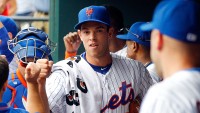
Last year, I made sure to bring my son to Steven Matz‘s first start. I wanted him to be there to see what we all presumed was the last installment of what was to be a Mets super staff.
It was a great day. Matz allowed only two runs over 7.2 innings. He went 3-3 at the plate with four RBI. It was such an amazing first start that his celebrating grandfather became a legend in his own right:

Matz followed that up with a terrific start in Los Angeles allowing no runs over 6.0 innings recording eight strikeouts. After that, Matz was shut down with an torn oblique that Dan Warthen checked out himself before the Dodger start.
He would’ve pitch again for another two months. He came back, and he went 2-0 with a 2.86 ERA in four starts. However, those numbers seem better than he pitched. In those four starts, batters hit .297/.330/.374 against him. He has a 1.45 WHIP. He would then have a back injury. This injury would not prevent him from being named to the postseason roster.
Matz wasn’t great in the postseason. He was 0-1 with a 3.68 ERA. He pitched into the sixth inning once in his three starts. He had a 1.432 WHIP.
What can we glean from all of this? Absolutely nothing. Matz’s first two starts were exciting, but they were only two starts. The four starts at the end of the season were after two months of complete inactivity. His postseason starts came more than two weeks after his last regular season start. His second postseason start came eight days later. His World Series start was 10 days later. He wasn’t getting enough work to stay sharp.
As of today, he’s probably a favorite to be the National League Rookie of the Year. Most Mets fans expect him to be an ace. I think that’s not fair. Matz hasn’t showed himself to be that good yet. The projections for him aren’t that rosy.
I don’t know what’s driving those numbers. I don’t know if his injuries last year are driving those low innings projections. It could be his two injuries last year.
I’m not sure how it is to presume Matz is injury prone. While he did have two freak injuries last year, it’s not fair to say he’s injury prone. So far, all we have is the two injuries this year and a longer than usual rehab from Tommy John surgery. So while I’m sure the Mets will have an eye on his innings pitched, I also believe, he has a reasonable chance to be healthy for a full season.
The next issue is why do the projections see Matz having such a high ERA next year. My presumption is that this is based on Matz’s 3.61 FIP last year. Based upon his FIP numbers, the projected ERAs are certainly justifiable. However, again, four of those starts were made after Matz had no baseball activities for two months due to his lat injury.
We all have hope Matz will be great in 2016. However, there is nothing from his 2015 season that can establish he will be good or bad next year. Whatever happens, I’m going to enjoy the ride.
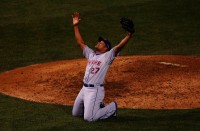
Last year, the Mets were carried by their pitching. It helped them sustain an anemic offense until the Mets got healthy and made trades. It helped carry them to the World Series. It’s the promise for the future.
That future first comes into question around 2019. That is the year that Matt Harvey becomes a free agent. Zack Wheeler could become a free agent the same year or the subsequent year. Two years later Jacob deGrom becomes a free agent. After that, the Mets will have to address the free agent case of Noah Syndergaard and Steven Matz. Naturally, this prompts the discussion of who the Mets should extend and when they should do it.
When these discussions take place, I find everyone to be extremely short-sided. Yes, it’s important to make a decision on the Mets starters, especially on Harvey, deGrom, and Syndergaard. However, I find that these discussions ignore Jeurys Familia. Like Harvey, Familia will be a free agent in 2019.
Familia was an exceedingly important part of the 2015 Mets. He was the stabilizing force at the back-end of a beleaguered bullpen. During 2015, Familia had the fifth most appearances. Of players who were strictly relievers, he had the third most innings pitched. He lead the league in games finished. He tied the Mets single season record for saves.
The advanced statistics also loved Familia’s 2015 season. He had an ERA+ of 200, which is astounding. It was the best amongst Mets pitchers. In fact, it’s a tick below Mariano Rivera‘s career 205 mark, which is the best in major league history. Familia’s FIP was 2.74, which, unsurprisingly, rates him as an excellent pitcher. Mariano’s career mark was 2.76. In essence, Familia’s 2015 was Riveraesque.
Keep in mind, Collins initially deployed Familia like Rivera. When it came time to close out the NLDS, Familia pitched two shutout innings. In the whole postseason, Familia had 12 appearances, and of those 12 appearances, he pitched more than one inning five times. He pitched 14.2 innings in those 12 appearances. Yes, he blew three saves in the World Series, but he only allowed one earned run the entire postseason. In reality, the blown saves were not on Familia but the Mets team as a whole.
Its important to lock-up some starting pitchers. If Harvey, deGrom, or Syndergaard leave, the Mets have other starters to keep having a strong rotation. If Familia were to leave, the Mets do not appear to have another reliever to take Familia’s spot. This makes extending Familia absolutely imperative.
So when it comes down to which Mets pitcher I would extend first, my answer is Jeurys Familia.
Editor’s Note: this article also appeared on metsmerizedonline.com

